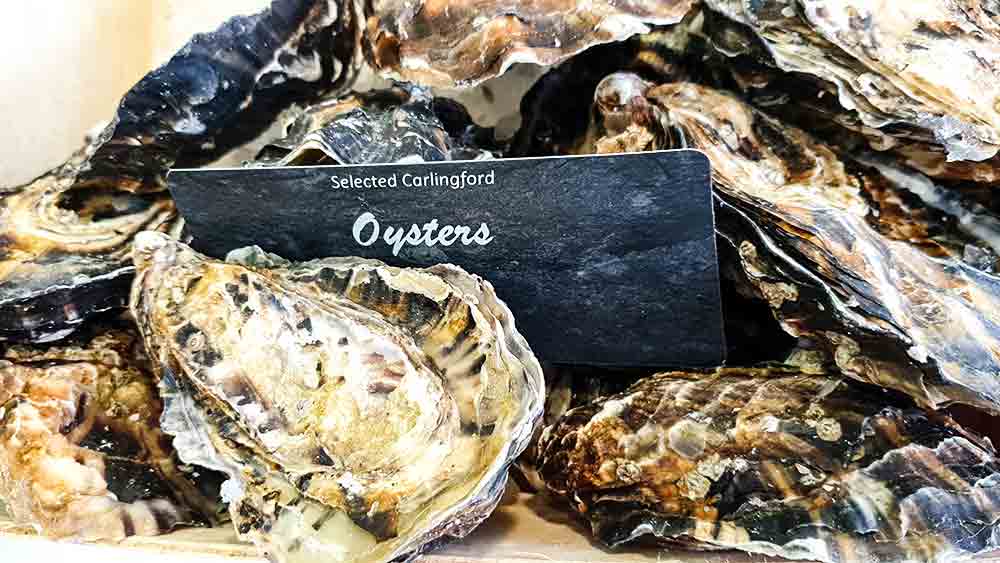Eating raw oysters is one of the best seafood experiences. No other food conjures up a taste of the sea as much as an oyster. There are however quite a few differences among these shellfish depending on type and their location . Tastes can range from salty to floral, some have fruity hint, mineral flavours Even oysters from the same estuary can vary in flavour depending upon exactly where they are grown.
Carlingford Oysters
We source from the award winning Carlingford Oyster Company They are a family business working in the heart of the famous Carlingford Lough in Ireland where oysters have thrived for many centuries. The award winning unique sweet taste and high meat content of the Carlingford Oyster is a real natural treat. They are rich in protein and low in fat with exceptionally high levels of trace elements such as iodine, iron, selenium copper and zinc; all of which delivers a superb flavour.
Its is the flow of Carlingford Lough’s grade-A waters that helps shape each oyster into a perfect tear-drop shape with a very strong shell and a smooth pearly white enamel. There is a large exchange of water with each tide which provides the plentiful supply of nutrients on which the oysters feed. In conjunction with the tidal elements there is freshwater flowing in from the mountain sides north and south of the Lough.
Storing Your Oysters
Your oysters should be stored with the cupped shell on the underside in order to retain the oysters juices. If they are not being consumed immediately, place them in a refrigerator in suitable container and cover with a damp cloth. Do not put them in water. They will keep for four or five days in a domestic fridge. They should be at a temperature 0 °c – 5 °c if these instructions are followed.
Before Opening
Fresh oysters should have tightly closed shells, any oysters which gap open and do not close when tapped should be discarded. Rinse the oyster under cold running water and scrub with a stiff brush to remove any grit or sand.

Tips For Opening/Shucking Oysters
Opening an oyster is also referred to as shucking, ideally do this just before you are ready to eat which will keep them as fresh as possible.
Place the oyster on cloth on a firm surface, to protect your hands use a damp folded tea towel to hold the oyster, try to keep it level as you open to help retain the juices. We recommend using a oyster shucking knife for this as they have strong short blade that will not snap and cause injury. Protect your hands! Insert (with a wiggle) the knife point into the ‘hinge’ of the shell on the thin pointed end. Twist the blade to lift the lid. Slide the blade under the lid to release any attachments. Then gently run a knife around the oyster, check for any small pieces of shell and you are ready to go.

Serving Suggestions
To serve oysters “au natural”.
Open the oysters just before you plan to eat them. Serve them on a dish garnished with lemon wedges or to be really impressive, on a bed of crushed ice. Have Tabasco sauce or red wine vinegar mixed with chopped shallots on offer and plenty of brown bread and butter.
Grilled oysters.
Heat the grill for 10 minutes. Open the oysters. Put a piece of crumpled foil in the base of the grill pan and lay the oysters in their half shells on top of the foil. Sprinkle with parsley mixed with bread crumbs. Dribble over a little olive oil and put under the grill for two minuets, no more. Alternately, dot with a little butter and some pureed shallots and flash under the grill for four minutes.
It is generally thought that the rock oyster is the better one for cooking with.
More oyster recipes here >> Bon appetit.






